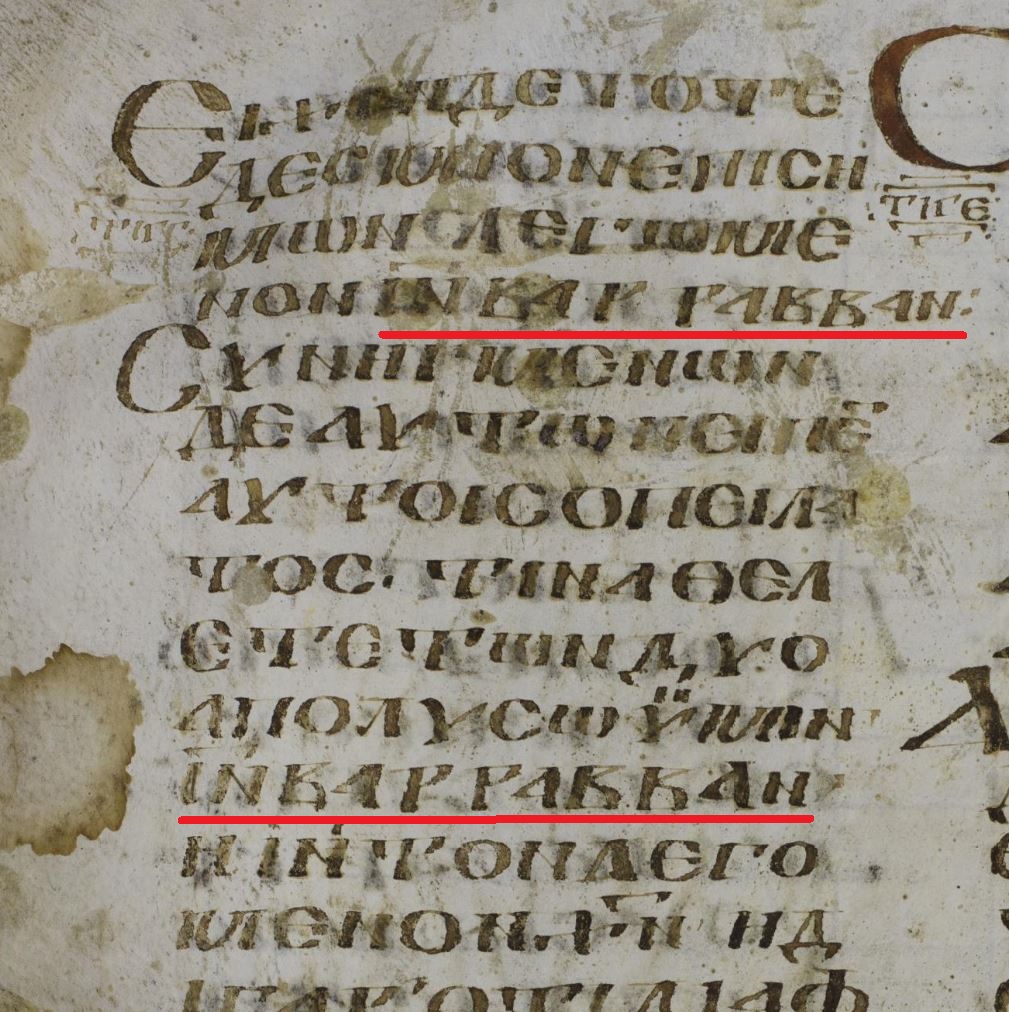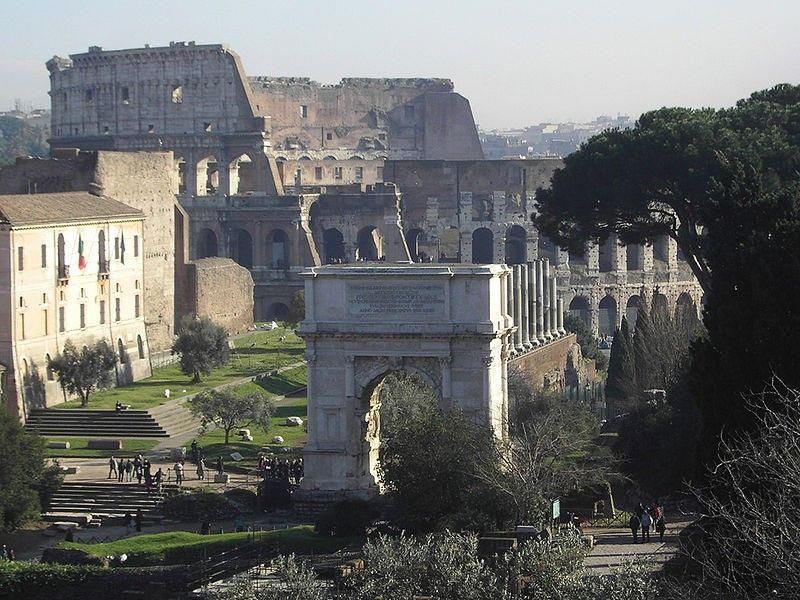New Testament Textual Criticism is a science that can make the eyes of even NT scholars go blurry. It’s technical, demanding, and tedious… and sounds like anything but fun or necessary. It involves painstakingly comparing ancient manuscripts to determine the wording of a text of which we have no original copy. But sometimes the results of such detailed analysis yields fascinating results. This is one of the many reasons that we teach our students to engage in this process.
Consider Matthew 27:16-17. It’s Matthew’s version of the Barabbas episode—the famous story in which the Roman governor Pilate offers freedom to either Jesus or Barabbas.
If you read technical commentaries on this passage, you will find that textual scholars debate the wording of these verses. We have some manuscripts that add the name “Jesus” to Barabbas as if his full name was “Jesus Barabbas.” Essentially, the text in these copies reads:
“Now they had then a notorious prisoner, called Jesus Barabbas. Therefore when they had gathered, Pilate said to them, ‘Which of the two do you wish that I should release to you, Jesus Barabbas or Jesus the so-called Christ?’”
Even though the story of Barabbas is mentioned in all four Gospels, only here in Matthew do some manuscripts include the extra name “Jesus” for him. This is a textual issue unique to the Gospel of Matthew… not Mark, Luke, or John.
When there are differences in wording between manuscripts, usually textual scholars lean heavily on the earliest manuscripts, those closest to the time of the writing. Unfortunately, our earliest copies of these verses come from the fourth and fifth centuries, roughly 300 years after it was written. We have no early papyri here.
BUT, we do have an early Christian writer who discussed these very words in his commentary! Origen was the church’s most significant exegete in the third century… and the subject of an amazing dissertation written by a certain CBU professor (spoiler alert—it is the author of this post!)! Origen lived before our earliest tangible copies of these verses had been inked! And Origen describes manuscripts that include the name “Jesus Barabbas” (GCS 38, p. 255). So at one time, there certainly were earlier manuscripts—at least from the third century, or possibly before—that included this reading… which no longer exist for our consideration today. And that reading was significant enough that we find the compounded name “Jesus Barabbas” appearing occasionally in other early versions of Matthew… in Syriac, Armenian, Georgian, and Arabic manuscripts.
Now just because that reading was early does not make it original. In the third century, Origen was aware of Greek manuscripts of Matthew that included such wording… and others that didn’t. And Origen himself actually did not like the compounded name. He thought it rather unthinkable that a name as sacred as “Jesus” should be associated with the name of a convicted criminal. Granted, in first-century Palestine, the Jewish name “Jesus” was a *very* common name. It’s essentially the Hebrew name “Joshua.” Many others at that time had the same name (Col 4:11; Acts 13:6; Josephus Ant. 11.298; War 6.300; inter alia). Or as one of my colleagues often quips: “Every Tom, Dick, and Harry was named Jesus….” 🙂
Whether or not the compounded name “Jesus Barabbas” was in the initial copy of Matthew is much debated… and currently there is no consensus. It’s possible that the name could’ve been added accidentally. But it’s also possible that a scribe intentionally shortened the name to “Barabbas” alone… with the same thinking as Origen’s… and to harmonize with the other Gospels since Mark, Luke, and John never mention Barabbas having such a compounded name. There are good solid scholars who think the compounded name was original to Matthew 27, and good solid scholars who don’t. Therefore, some English translations include the compounded name (NRSV, CEB, NIV), and others do not (RSV, NASB, ESV, HCSB, NJB).
Either way, the manuscripts of Matthew that contain the reading “Jesus Barabbas” represent someone’s Bible—the living text of the Gospels—even if the compounded name was not original to the text. In other words, each manuscript belonged to someone—most likely a church, since most manuscripts were not privately owned for personal reading. So in that church, for those people, reading that manuscript, when they read what we now call Matthew chapter 27, that is how they understood the passage… “Jesus Barabbas” over and against “Jesus the so-called Christ.”
And what a fascinating comparison that is. When worded this way, the Judean crowds prompted by Pilate had to make a decisive decision… which “Jesus” did they want? Jesus Barabbas?… the violent, militant rebel who had committed murder revolting against Rome (see Mark 15:7)?… OR… “Jesus the so-called Christ”?… the Matthean Jesus who had said “love your enemies” (Mt 5:44)… “turn the other cheek” (Mt 5:39)… and “blessed are the peace-makers” (Mt 5:9)?
It’s an interesting contrast. We know nothing about Barabbas or any rebellion which Mark mentions (15:7). We don’t even know from outside sources that the Romans or Pilate had any kind of regular custom releasing a prisoner at Jewish festivals. Maybe this was just a one-time occasion as a nonviolent way for Pilate to squelch a growing disturbance so he wouldn’t lose control and thereby lose his job, as he eventually did.
Barabbas is presented as a violent rebel challenging Roman rule so Judea could be independent of pagan intrusion… to bring back the glory days of David and Solomon. With the zealot mentality, Barabbas would’ve been a kingdom builder—the kingdom of Israel—established with sword and dagger. He would’ve acted in what he thought was obedience to God, fighting for God and God’s people, defending God, God’s house, and God’s honor.
Jesus of Nazareth also was a kingdom builder. And he preached a lot about a kingdom… but a whole different kind of kingdom. (Occasionally some critical scholars have tried to claim that maybe the historical Jesus actually was a zealot and that’s why he got executed by the Romans; there seems to be no good evidence of that. If that were the case, we would expect to find much more anti-Roman sentiment by those associated with the historical Jesus.)
Instead, the kingdom of the Nazarene was a different kind of kingdom, a kingdom of peace, of justice and fairness, of mercy, of humility. It stood against power, materialism, and oppression. It stood for the marginalized, the oppressed, and the castaway. It was inclusive and not exclusive. It was radical and iconoclastic. A kingdom unlike any other. A kingdom without walls or turrets, moats or drawbridges. A kingdom that was almost unthinkable and unimaginable, except on the personal level, through the goodness and grace of its citizens, who were to live by the law of love in selfless submission to their God.
Unfortunately, forty years after this scene with the Roman governor and the Judean crowds, the same city faced a similar decision all over again. A Roman officer had been killed and events escalated quickly. Nero amassed his legions. Jerusalem chose the way of war, not peace. Rebellion, not diplomacy. Militancy, not mediation. Jewish militants—who considered themselves God’s patriots—recklessly thought this was their moment to seize the day and God would vindicate them and their cause. And they could not have been more wrong, or outnumbered.
The destruction that followed was staggering. Roman legions descended from the north and slaughtered village after village as they marched towards Jerusalem. Troops surrounded the city at the worst possible time as pilgrims had congregated for Passover. The Romans besieged the city and crucified any who tried to escape. Inside, food supplies ran out, and people died from hunger, strife, and anarchy. Finally, in August, with Jerusalem crippled by hunger and exhaustion, the Romans tore down the walls, burned the Temple, and utterly conquered the city. The survivors inside were all either slaughtered if they resisted or enslaved if they didn’t.
This past summer, I stood in Rome and observed the Arch of Titus. Titus was the Roman general, and eventual emperor, who led the Roman conquest of Jerusalem. Inside his arch, you can still see the inscription of the plundered artifacts such as a menorah that were paraded through the streets of Rome. And just a few hundred yards from there stands the Colosseum. That world-famous, iconic structure was erected only nine years later in part by the loot and slaves from the Roman conquest of Jerusalem. As famous and impressive as those monuments stand today, they represent conquest, violence, and bloodshed, tens of thousands of lives cut short pursuing short-sighted goals and ill-fated gains.
The question as posed in some manuscripts of Matthew 27 still stands for us today. Which kind of Jesus do we really want? Which one do we really want to follow? Which kind of kingdom do we really seek? And like those from centuries before, the answers are evident in our choices, the way we live our lives. May God help us to seek the right kingdom.


